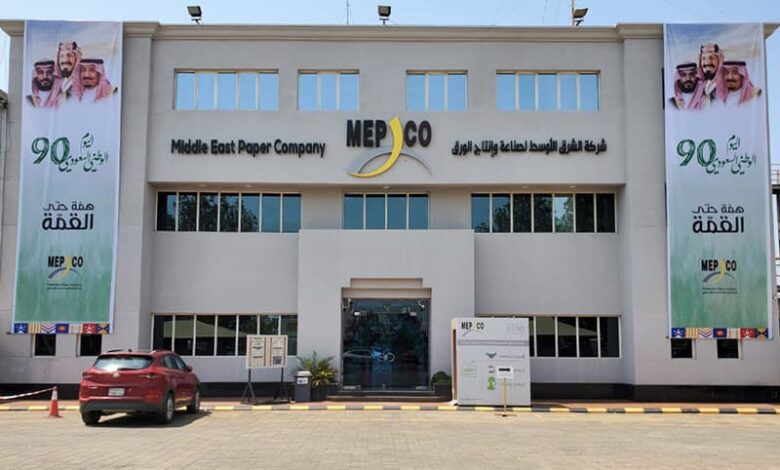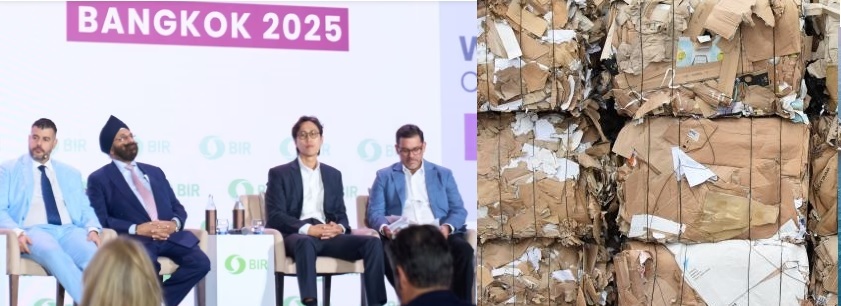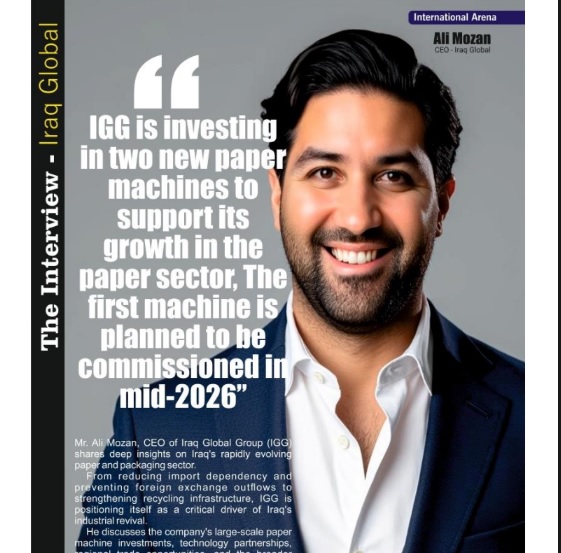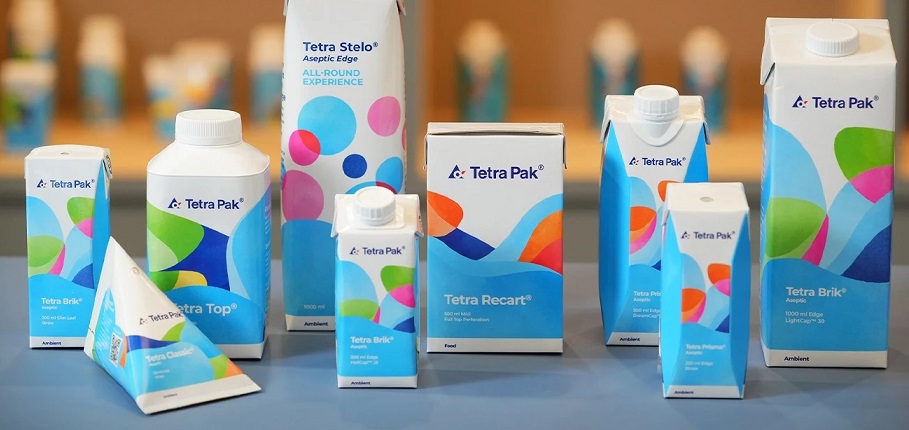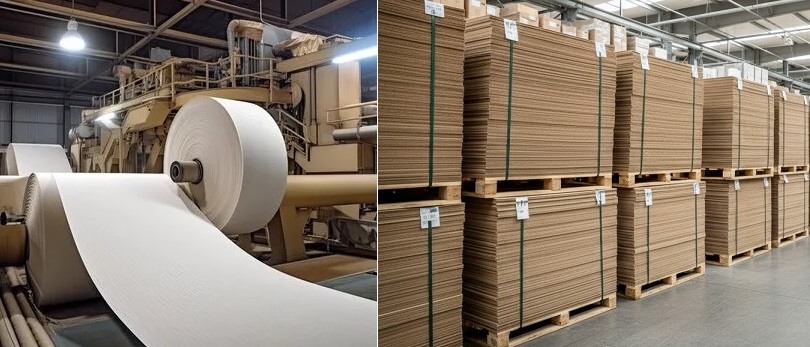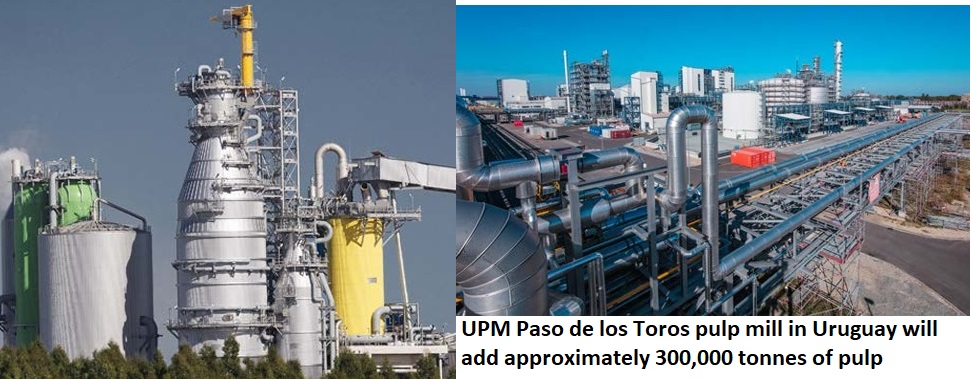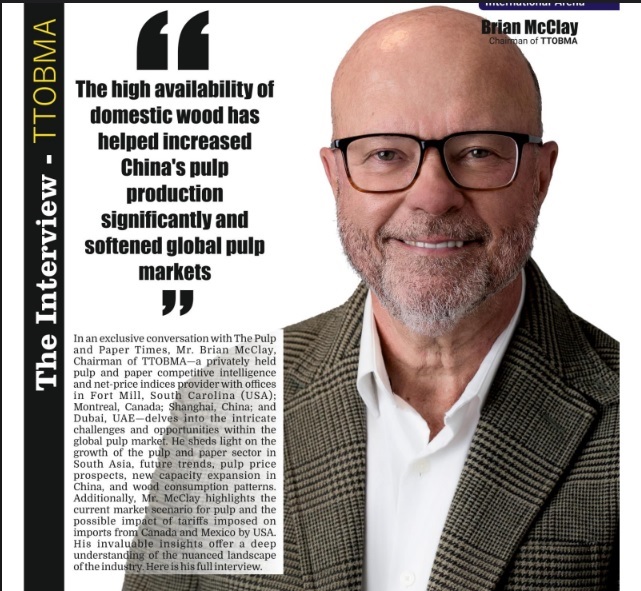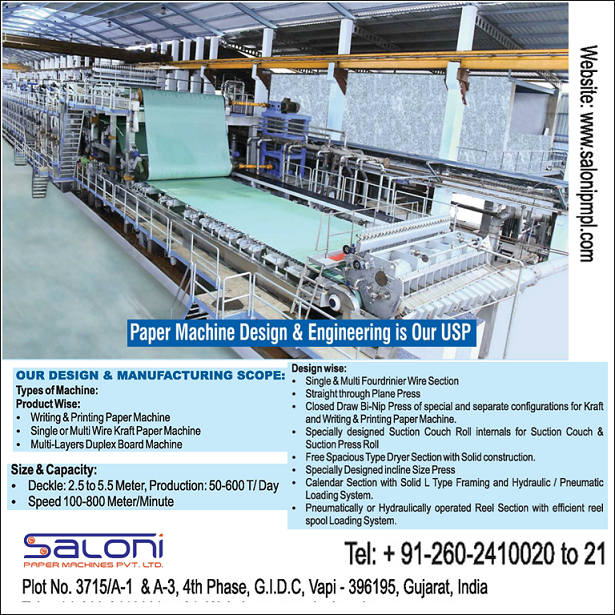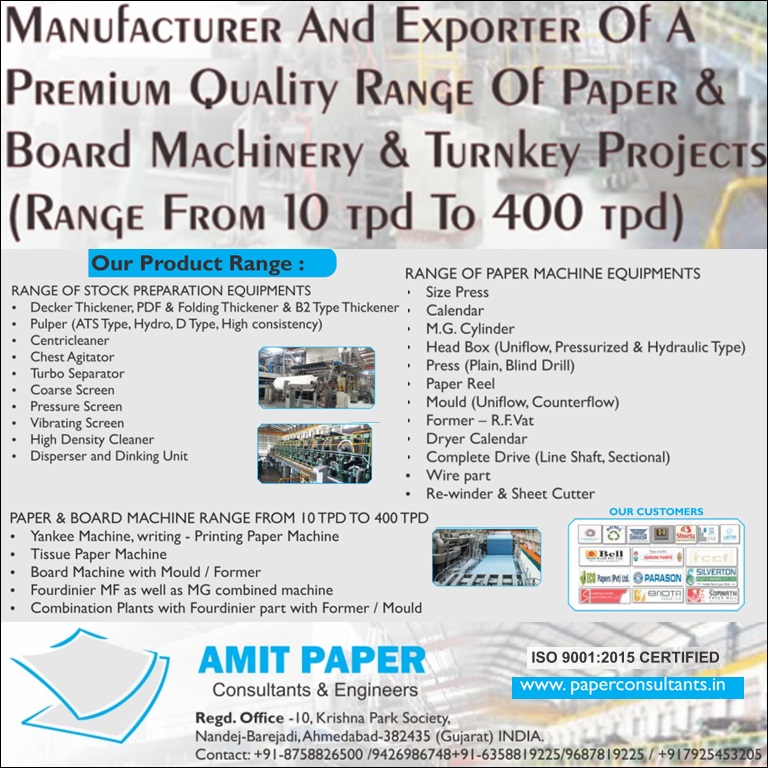"Over time, we are likely to see smaller paper mills exit the industry, while larger producers take the lead," says Mr. Abdullah Al Khateeb, MD of Ittihad Paper Mill
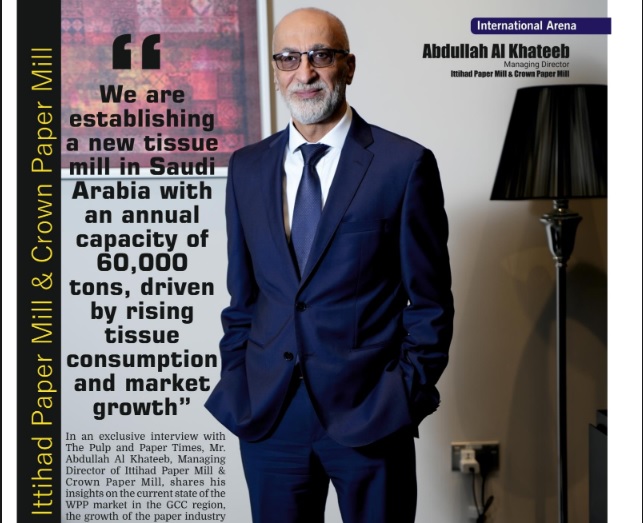
"Over time, we are likely to see smaller paper mills exit the industry, while larger producers take the lead," says Mr. Abdullah Al Khateeb, MD of Ittihad Paper Mill
Key Points:
-We are establishing a new tissue mill in Saudi Arabia with an annual capacity of 60,000 tons, driven by rising tissue consumption and market growth
-many mills in Europe are shutting down, and I believe the market will eventually stabilize”
-In fact, EUDR could give us a competitive advantage when expanding into European and other international markets, as we already collaborate with major pulp suppliers
In an exclusive interview with The Pulp and Paper Times, Mr. Abdullah Al Khateeb, Managing Director of Ittihad Paper Mill & Crown Paper Mill, shares his insights on the current state of the WPP market in the GCC region, the growth of the paper industry in the MENA region, demand forecasts, and the impact of EUDR. He also discusses IPM & CPM’s future growth strategy, expansion plans, and commitment to product quality. Here is the full interview:
The Pulp and Paper Times:
Q: Please provide a brief introduction to Ittihad Paper Mill (IPM) and Crown Paper Mill.
IPM is a subsidiary of Industrial Capital Group (ICG), a leading private holding conglomerate that owns, operates, and governs a stellar portfolio of manufacturing companies across four sectors: paper, metal, chemicals, and cement & steel. IPM's manufacturing facility is situated on a 250,000 sqm plot in the Industrial City of Abu Dhabi, UAE, with a production capacity of 325,000 tons per annum. It is the first printing and writing paper production facility in the GCC and the largest in the MENA region. IPM is committed to meeting the growing regional demand for paper products while also serving international markets. Products produced by IPM are strictly in compliance with global environment standards and they source pulp only from certified sustainable forests.
Crown Paper Mill has been one of the leading producers of tissue paper jumbo rolls in the region since 1996. The mill spans a total area of 50,000 sqm, with an annual production capacity of 100,000 tons. Headquartered in the Industrial City of Abu Dhabi, UAE, the mill produces “Prime Quality” jumbo rolls in various grades, including facial tissue, toilet tissue, kitchen towels, napkins, C-fold, and carrier tissue. All high-quality tissue grades are manufactured using the finest virgin pulp and recycled materials sourced from around the world. Crown Paper Mill is set to commission a new mill in Saudi Arabia soon, which will add an additional 60,000 tons to its production capacity, increasing its total output to 160,000 tons across the UAE and Saudi Arabia.
Q: Ittihad Paper Mill (IPM) is the first printing and writing paper production facility in the GCC and the largest in the MENA region. How do you evaluate the current state of the WPP market in the GCC region?
The Gulf market is a dynamic and promising region. Establishing IPM’s presence here is highly beneficial, as it allows us to connect with clients more easily. Our competitive advantage lies in offering high quality, shorter delivery times, and competitive pricing. While the market may not experience rapid expansion, it continues to grow and evolve. More customers are recognizing IPM’s superiority over competitors and are increasingly choosing our products over those from both regional and international suppliers.
Q: Please explain the product portfolio (product mix) of IPM, including GSM, BF, and capacity. Additionally, provide an update on the latest developments at your company, including future expansions and modifications to existing paper machines.
Regarding our product portfolio, we produce paper ranging from approximately 40gsm to 140gsm. Our offerings include uncoated wood-free paper, offset, reels, copy rolls, and folio sheets. For cut sizes, we manufacture paper in 70gsm, 75gsm, 80gsm, and 90gsm, providing various grades to meet market demands. Recently, we introduced creamy paper for specialized use, including Quran printing, which has gained strong market acceptance both regionally and internationally.
In terms of expansion, our current focus is not on increasing capacity but on diversifying and enhancing our product portfolio. A key priority is improving cut-size production, as it is a crucial market segment. We are working to optimize productivity in this area to strengthen our brand presence. As demand for our specific cut sizes grows, we are committed to meeting market needs efficiently.
Additionally, we are implementing various initiatives to reduce fresh water, electricity, and resource consumption. One such project, set to begin soon, is the second phase of our water treatment system, aimed at significantly reducing freshwater usage in our factory.
Q: Oversupply in the market is likely to persist in FY 2025, as market growth remains lower than the capacity being added by domestic and international mills. How do you plan to protect your margins amidst these new capacities in China and other Southeast Asian countries?
The challenge of increasing global production capacity is always present, whether from China or other regions. We recognize that intense competition is inevitable, but our strategic location in the Gulf and the Middle East gives us a strong advantage. Our proximity to clients, shared language, and cost-effective operations makes us highly competitive in the market.
Meanwhile, many mills in Europe are shutting down, and I believe the market will eventually stabilize. Over time, we are likely to see smaller mills exit the industry while larger producers take the lead. As one of the major manufacturers with substantial production capacity, we are well-positioned to thrive. While competition, particularly from China will remain, our strong market reputation will continue to be a key advantage.
Q: The government of the United Arab Emirates imposed an export ban on wastepaper through customs notice 07/2022. While the ban is temporary, it has been extended until March 2023. What do you perceive as the purpose of this move, considering the UAE is a GCC member country? How will it benefit the local industry?
We do not deal with or purchase waste paper; we use only virgin pulp. Therefore, whether a ban is imposed or not, it will not affect IPM.
Other manufacturers that use waste paper for kraft paper and tissues will be impacted. However, I believe the UAE is not a major buyer of waste paper, so the overall impact will likely be minimal. I do not see a significant volume of waste paper being exported from this market.
Q: Being closely associated with the paper market, how would you differentiate the sustainability approaches of Indian and GCC paper manufacturers? Additionally, how do they manage pricing structures amid global factors and headwinds?
I prefer not to answer this, as it is not an appropriate question, and I cannot compare IPM to the Indian market.
Q: The HMPV virus is spreading in China and may further slowdown the Chinese economy. What could be the possible implications for the paper industry amidst the spread of the HMPV virus?
I will also not answer this question because we still haven't seen any effect, and I choose not to answer.
Q: The European Union Deforestation Regulation (EUDR) poses significant challenges to the pulp and paper industry due to uncertainties in its implementation, potential cost increases, and supply chain complexities. As a pulp importer, how does IPM view EUDR—as a challenge or an opportunity?
Regarding the EUDR, while it is a complex regulation and may be challenging to implement, we at IPM do not anticipate any issues in complying with it. We are already taking the necessary steps to align with its requirements. In fact, this regulation could give us a competitive advantage when expanding into European and other international markets, as we already collaborate with major pulp suppliers. Therefore, we do not foresee any obstacles in this regard.
Q: Can you walk us through the recent developments at Crown Paper Mill, including details about the new tissue paper machinery under construction at your facility?
Yes, at CPM, we are expanding as a tissue mill. We are establishing a new tissue mill in Saudi Arabia with an annual capacity of 60,000 tons, driven by rising tissue consumption and market growth. Production is expected to begin in early 2026. Once operational, CPM’s total production capacity will reach approximately 160,000 tons across Saudi Arabia and the UAE, making us one of the largest producers of tissue paper jumbo rolls in the region.
Q: How do you predict the growth of the paper industry in the MENA region over the next five years? Do you believe that the export of finished paper to MENA countries will significantly decrease due to the addition of new capacities?
Overall, paper consumption has grown over the past 20 years across all paper types. However, growth has been particularly strong at CPM for tissue, and while it may not be as rapid as before, it is expected to continue at a steady pace.
It is important to note that we do not deal with finished paper; we specialize in tissue paper on reels. Challenges are always present, but at CPM and IPM, we understand them and remain committed to overcoming them. We are continuously working to navigate and address these challenges effectively.
Q: India has been a significant exporter of kraft and packaging paper to GCC countries and China. However, the recent surge in packaging paper capacities in Southeast Asia and the GCC has shifted market dynamics. Do you think the low import levels of paper from India will persist, or is this a temporary phase?
I cannot answer this, as it concerns India's export of kraft paper, and it's not our area of expertise.
Web Title: "Over time, we are likely to see smaller paper mills exit the industry, while larger producers take the lead," says Mr. Abdullah Al Khateeb, MD of Ittihad Paper Mill





 Join WhatsApp Group
Join WhatsApp Group Join Telegram Channel
Join Telegram Channel Join YouTube Channel
Join YouTube Channel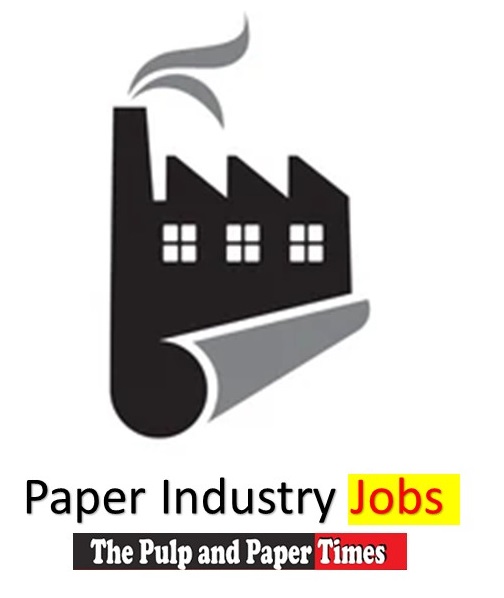 Join Job Channel (View | Submit Jobs)
Join Job Channel (View | Submit Jobs) Join Buy Sell Channel (Free to Submit)
Join Buy Sell Channel (Free to Submit) Paper News Headlines Channel (Free to read)
Paper News Headlines Channel (Free to read)






